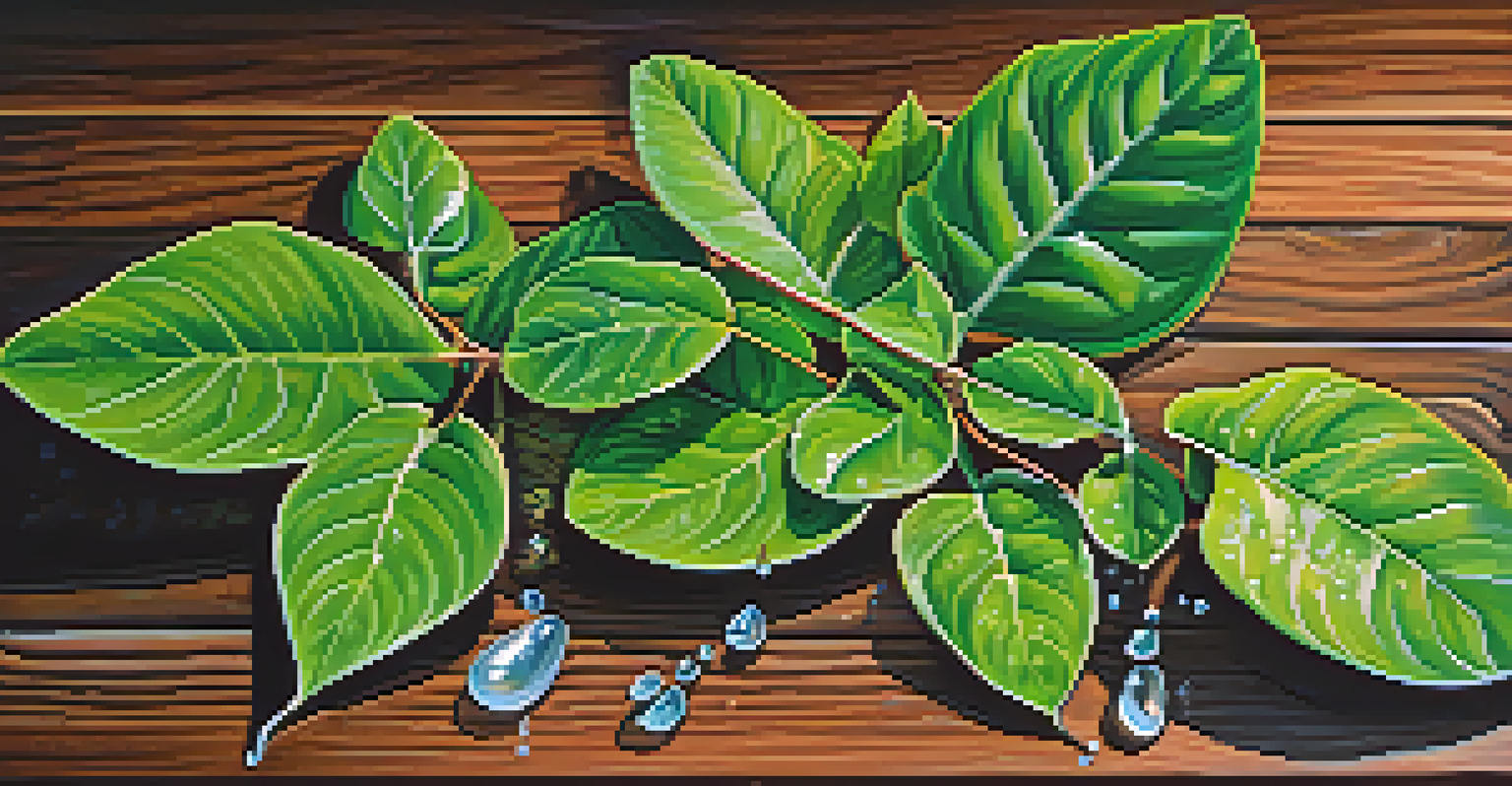Impact of Climate Change on Ayahuasca Production Sustainability

Understanding Ayahuasca and Its Importance
Ayahuasca is a traditional plant medicine used by indigenous communities in the Amazon, known for its psychoactive properties. This brew, made primarily from the Banisteriopsis caapi vine and the Psychotria viridis leaf, has cultural, spiritual, and medicinal significance. Its importance extends beyond the Amazon, as it attracts global interest for its potential therapeutic benefits, especially in mental health.
What we are doing to the forests of the world is but a mirror reflection of what we are doing to ourselves and to one another.
The roots of Ayahuasca run deep, intertwined with the rituals and traditions of the native tribes. These practices not only serve as a means of connecting with the spiritual world but also play a crucial role in preserving ancient knowledge. As interest in Ayahuasca grows, so does the need to ensure its sustainable production, which is increasingly threatened by climate change.
Understanding the delicate balance of its ecosystem is vital for the future of Ayahuasca. This balance is not just about preserving a plant; it's about maintaining a way of life for many indigenous peoples and ensuring that this sacred medicine continues to be available for generations to come.
Climate Change: A Growing Threat to Biodiversity
Climate change is causing significant shifts in weather patterns, which can lead to unpredictable rainfall and temperature extremes. These changes threaten the delicate ecosystems where Ayahuasca plants thrive. When the natural habitats of these plants are disrupted, it can directly impact their growth and availability.

Biodiversity is crucial for the sustainability of any plant species, including those used in Ayahuasca. A decline in biodiversity can lead to weakened ecosystems, making it harder for plants to adapt to changing conditions. This not only puts the Ayahuasca plants at risk but can also impact the wildlife that depends on these ecosystems.
Ayahuasca's Cultural Significance
Ayahuasca holds deep cultural, spiritual, and medicinal importance for indigenous communities in the Amazon and beyond.
As habitats change, the survival of many species, including the plants used for Ayahuasca, hangs in the balance. It's a stark reminder that the health of our planet is interconnected, and the effects of climate change ripple through the ecosystems we rely on.
Effects of Temperature Changes on Ayahuasca Plants
Temperature fluctuations, a direct result of climate change, can significantly impact the growth cycles of Ayahuasca plants. These plants have evolved to thrive in specific temperature ranges, and any deviation can affect their development. For instance, increased temperatures can lead to faster growth rates, but they may also stress the plants, making them more vulnerable to disease.
The greatest danger to our future is apathy.
Moreover, changes in temperature can alter the timing of flowering and fruiting, which can disrupt traditional harvesting practices. Indigenous communities rely on these cycles for their cultural and economic activities, and any disruption can have cascading effects on their livelihoods. This highlights the need for adaptive strategies to ensure sustainable harvesting.
Understanding how temperature affects Ayahuasca plants is crucial for developing preservation strategies. By studying these impacts, we can better prepare for the future, ensuring that this important plant continues to thrive despite changing climate conditions.
The Role of Rainfall Patterns in Ayahuasca Cultivation
Rainfall patterns are another critical factor influencing Ayahuasca cultivation. Changes in precipitation can lead to either droughts or excessive rainfall, both of which can be detrimental to plant health. Drought can hinder growth, while too much rain can lead to root rot and other diseases.
The traditional knowledge of indigenous communities often includes understanding the nuances of local weather patterns. However, as climate change intensifies, these patterns become less predictable, complicating the cultivation process. This unpredictability can disrupt local economies that depend heavily on Ayahuasca production.
Climate Change Threatens Biodiversity
Shifts in weather patterns due to climate change pose significant risks to the ecosystems where Ayahuasca plants thrive.
Adapting to these changing rainfall patterns is essential for the sustainability of Ayahuasca. This could involve implementing integrated water management practices or selecting more resilient plant varieties to withstand climatic shifts.
Impact of Climate Change on Indigenous Communities
Indigenous communities are often the first to feel the effects of climate change, especially those whose livelihoods depend on Ayahuasca. As their environment changes, they face challenges not only in cultivation but also in preserving their cultural heritage. The loss of Ayahuasca may equate to a loss of identity and tradition.
Additionally, these communities often lack the resources to adapt to rapid climate changes. This can lead to increased vulnerability and dependence on external aid, further threatening their way of life. The connection between climate change and indigenous culture is profound, highlighting the need for inclusive conservation strategies.
Empowering these communities with tools and knowledge to adapt can help preserve both the Ayahuasca plant and their cultural practices. By valuing their traditional ecological knowledge, we can foster a more sustainable future for both the environment and the people who depend on it.
Sustainable Practices for Ayahuasca Production
To ensure the sustainability of Ayahuasca production, adopting eco-friendly agricultural practices is key. This includes techniques like agroforestry, which integrates Ayahuasca cultivation with other crops and trees, promoting biodiversity and soil health. Such practices not only protect the plants but also enhance the resilience of local ecosystems.
Additionally, community-led initiatives that focus on conservation can play a pivotal role in sustainable production. When local communities are involved in decision-making, they are more likely to implement practices that respect their cultural and ecological contexts. This creates a more sustainable and equitable model for Ayahuasca production.
Sustainable Practices for Preservation
Adopting eco-friendly agricultural methods and empowering local communities are crucial for ensuring the sustainable production of Ayahuasca.
Education and training programs can also support sustainable practices by providing knowledge on climate adaptation and sustainable agriculture. By equipping communities with these tools, we can help ensure that Ayahuasca remains a thriving part of their cultural and economic landscape.
The Future of Ayahuasca: A Call for Action
The future of Ayahuasca production hinges on our collective response to climate change. As we face mounting environmental challenges, proactive measures are essential to safeguard this important plant. This includes not only protecting its natural habitat but also supporting the communities that cultivate it.
Collaboration between scientists, indigenous leaders, and policymakers can lead to effective strategies for conservation and sustainable practices. By working together, we can create a framework that prioritizes both environmental health and cultural preservation. This holistic approach is vital for the sustainability of Ayahuasca production.

Ultimately, addressing climate change is not just about protecting a plant; it's about honoring the traditions and knowledge of those who have used it for centuries. By taking action today, we can ensure that the legacy of Ayahuasca continues to thrive in harmony with the natural world.